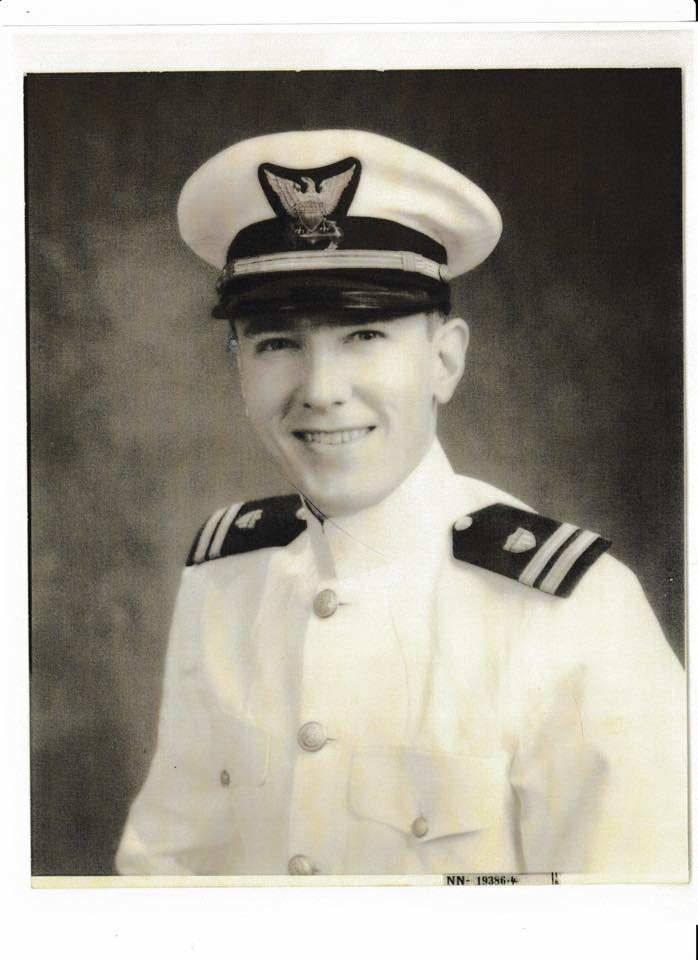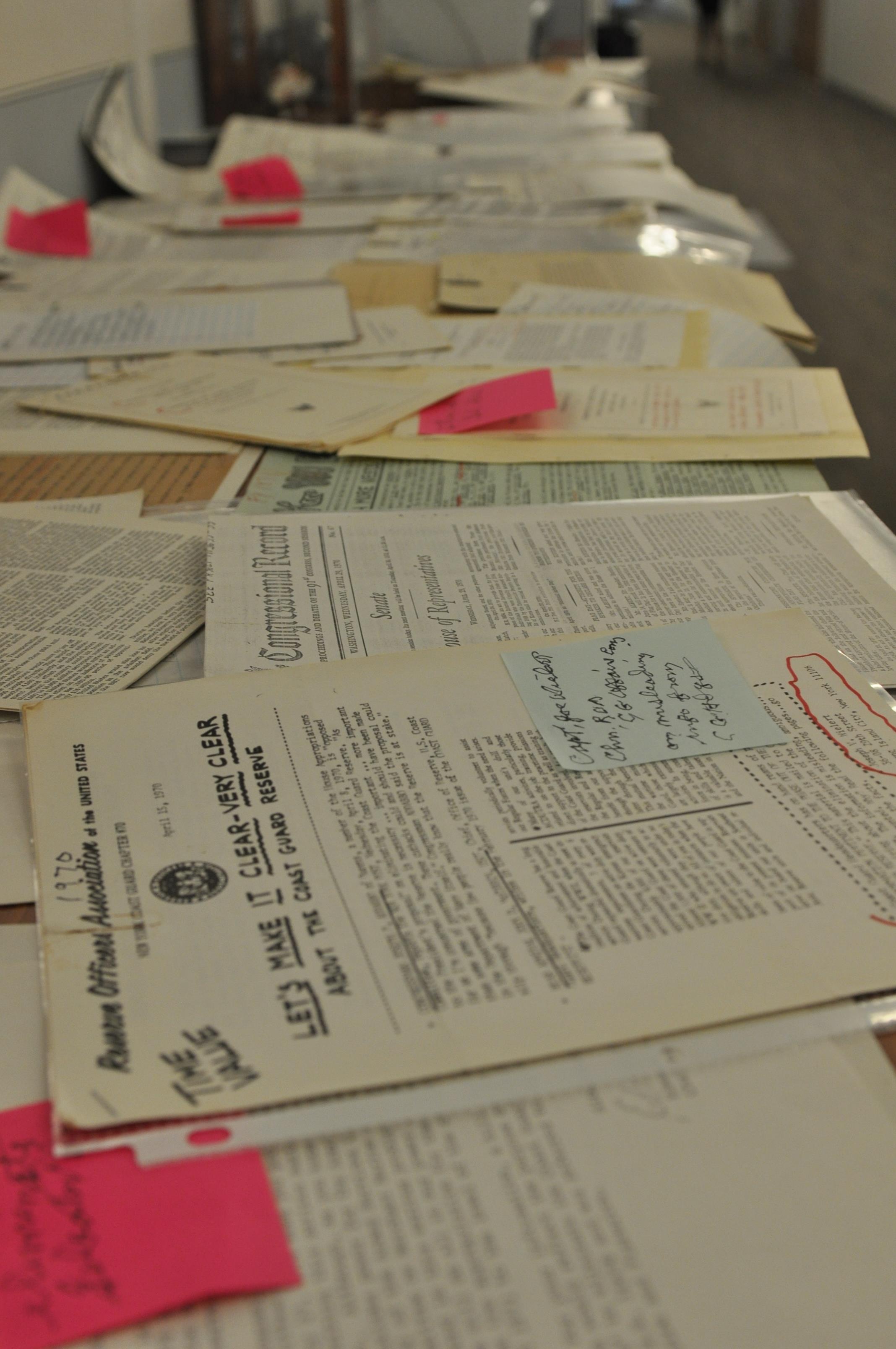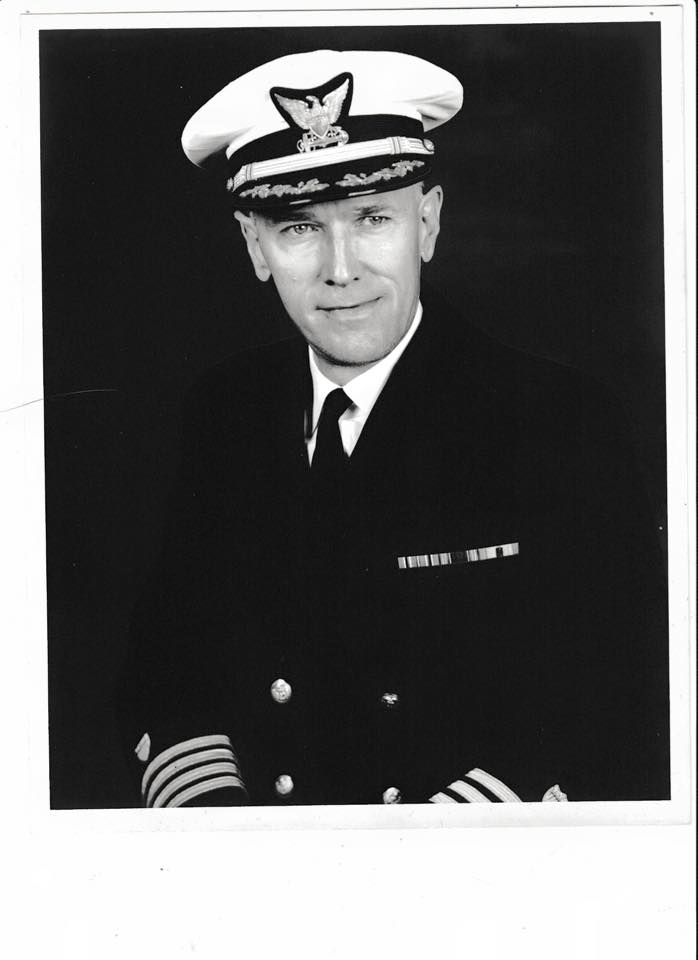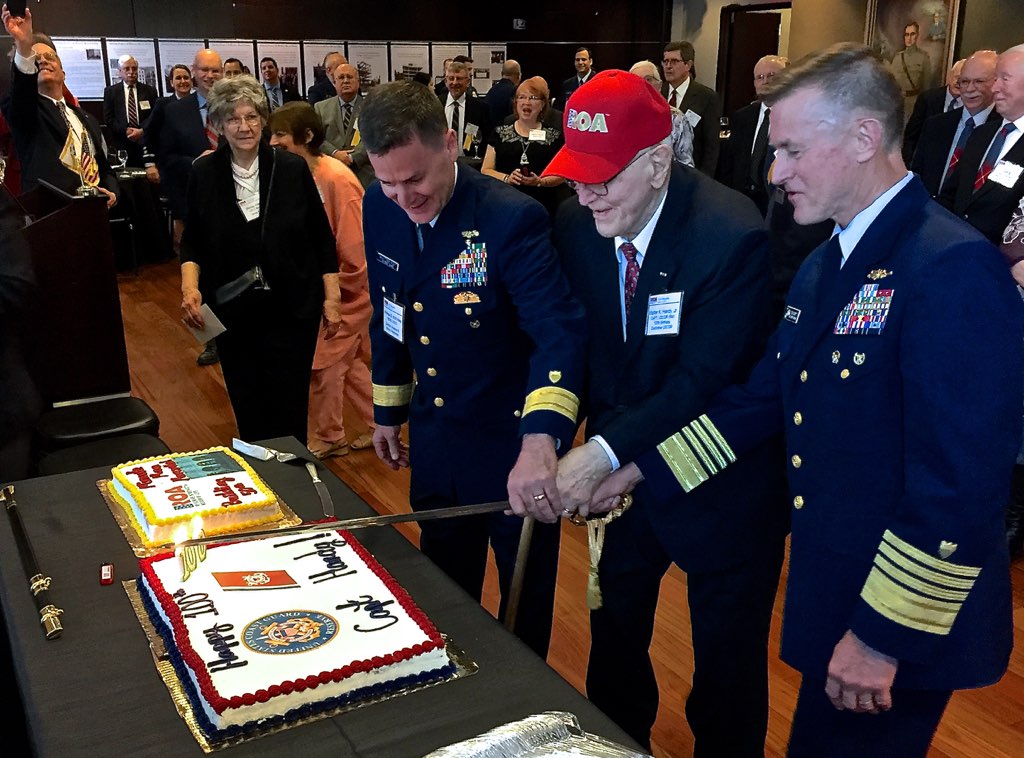[Editor’s note: The following essay is excerpted from the original in Reservist Magazine, Volume 64, Issues 2 and 3.]
 Over the course of his Coast Guard career, Walter Handy helped save the Coast Guard reserve, not just once, but twice. After the bombings at Pearl Harbor, he was drafted by both the Army and Navy, but was rejected by both due to extreme nearsightedness. In 1942, he wrote two letters to the Fifth Coast Guard District in Portsmouth, Va,, describing his experience in finance. Because of his financial expertise with the Department of Treasury, Handy received a medical waiver and a Coast Guard officer’s commission.
Over the course of his Coast Guard career, Walter Handy helped save the Coast Guard reserve, not just once, but twice. After the bombings at Pearl Harbor, he was drafted by both the Army and Navy, but was rejected by both due to extreme nearsightedness. In 1942, he wrote two letters to the Fifth Coast Guard District in Portsmouth, Va,, describing his experience in finance. Because of his financial expertise with the Department of Treasury, Handy received a medical waiver and a Coast Guard officer’s commission.
During the war, Handy served in the Tidewater area of Southeast Virginia. There, he established and commanded a 300-man barracks for port security operations at the Army’s Hampton Roads Port of Embarkation. He led port security patrols, security checks, and vessel escorts in and out of port. He also oversaw cleanup of the June 1943 explosion of ammunition ship SS John Morgan, which killed most of the crew and many more on a second cargo ship involved in the conflagration.
At the end of World War II, almost all enlisted Coast Guardsmen were released from active duty, and most officers were transferred to the inactive ready reserve (IRR). After returning to his job at the Treasury Department, Handy believed that the selected reserve (SELRES) would lose critical expertise acquired during the war without a formal training program or coordination beyond informal officer meetings. Congress had already denied the Coast Guard’s request for appropriations to start a peacetime reserve training program. Fortunately, Handy’s office at the Treasury was near the old Coast Guard building in Washington, positioning him to lead the fight to retain the Coast Guard Reserve.
In 1948, H andy approached Assistant Commandant, Rear Admiral Merlin O’Neill, with the idea of a voluntary training program. This resulted in the formation of non-paid voluntary training units (VTUs). These were “composite units” made up of multiple job specialties. While this was a success, Handy knew reservists needed more formal training and enlisted billets to support readiness. In 1949, he and two other reservists fleshed out the idea for a robust training program that would incorporate the VTUs into Coast Guard port security operations.
andy approached Assistant Commandant, Rear Admiral Merlin O’Neill, with the idea of a voluntary training program. This resulted in the formation of non-paid voluntary training units (VTUs). These were “composite units” made up of multiple job specialties. While this was a success, Handy knew reservists needed more formal training and enlisted billets to support readiness. In 1949, he and two other reservists fleshed out the idea for a robust training program that would incorporate the VTUs into Coast Guard port security operations.
Handy heightened the visibility of the Coast Guard reserve by networking and forming the first Coast Guard chapter of the Reserve Organization of America (ROA). He leveraged the chapter’s charter event as an opportunity to cultivate relationships within Congress and Treasury, educating the nation’s leadership on the Coast Guard and its port security program. Handy himself drafted multiple articles for publication in 1949 highlighting the need for a strong reserve force able to respond to emergency recall and trained to fight fires, supervise military outloads and defend against sabotage.
In early 1950, as part of his congressional outreach, Handy and his fellow officers sent copies of his articles to key congressional representatives and other Coast Guard ROA chapters. Around the country, reserve officers, including Handy, educated their congressmen on Reserve efforts by writing opinion letters and editorials and gaining support from local industry. Handy’s efforts paid off in 1950, when Congress approved a $1 million appropriation for a Coast Guard Reserve training program.
In the 1950’s, Handy continued to strengthen the reserve by serving on the first Coast Guard reserve policy board. The Coast Guard ROA’s annual dinner in honor of National Defense Week cemented the reserve’s congressional and departmental connections and the bond between active duty and reserve officers. It seemed that the Coast Guard reserve was well established.
However, by the late 1960s, Handy was called into action a second time to ensure the survival of the Coast Guard reserve. In a perfect storm, the Coast Guard’s transition to the Department of Transportation (DOT) a nd Nixon Administration budget cuts threatened elimination of Coast Guard SELRES. The Office of Management and Budget (OMB) and DOT identified SELRES as an “unnecessary expense,” even though the Coast Guard had just completed a two-year “Reserve Training Concepts and Force Analysis” study. The study noted that the smallest SELRES staffing could be, while still accomplishing wartime functio
nd Nixon Administration budget cuts threatened elimination of Coast Guard SELRES. The Office of Management and Budget (OMB) and DOT identified SELRES as an “unnecessary expense,” even though the Coast Guard had just completed a two-year “Reserve Training Concepts and Force Analysis” study. The study noted that the smallest SELRES staffing could be, while still accomplishing wartime functio ns, was 16,590 members.
ns, was 16,590 members.
The elimination of SELRES would have required the U.S. Navy to assume the domestic port security mission, a task it was admittedly not funded or trained to do. In December 1969, the $25 million necessary to fund SELRES was not slated for inclusion in the DOT budget proposal; however, Handy continued his persistent outreach to fellow Coast Guard reservists and ROA members to lobby members of Congress. Unconstrained by official orders from DOT and OMB, Handy ensured that Congress understood the value of the Coast Guard SELRES, rebutting OMB’s argument point by point. All of these efforts taught Congress the value of the Coast Guard reserve and, by August 1971, both the House and Senate approved a 15,000 member SELRES with a $25.9 million appropriation. They also recommended formalizing a peacetime mission for the reserve.
In 1971, after winning the fight to retain the Coast Guard reserve, Capt. Walter Handy quietly retired from the service. He was not alone in saving the reserve, but he was the unofficial leader who organized the media and grass roots campaign to ensure leaders and decision makers understood the value of the Coast Guard reserve. Handy’s advocacy over the course of his long reserve career, while not formally recognized, made a difference for every person who has ever served in the reserve.